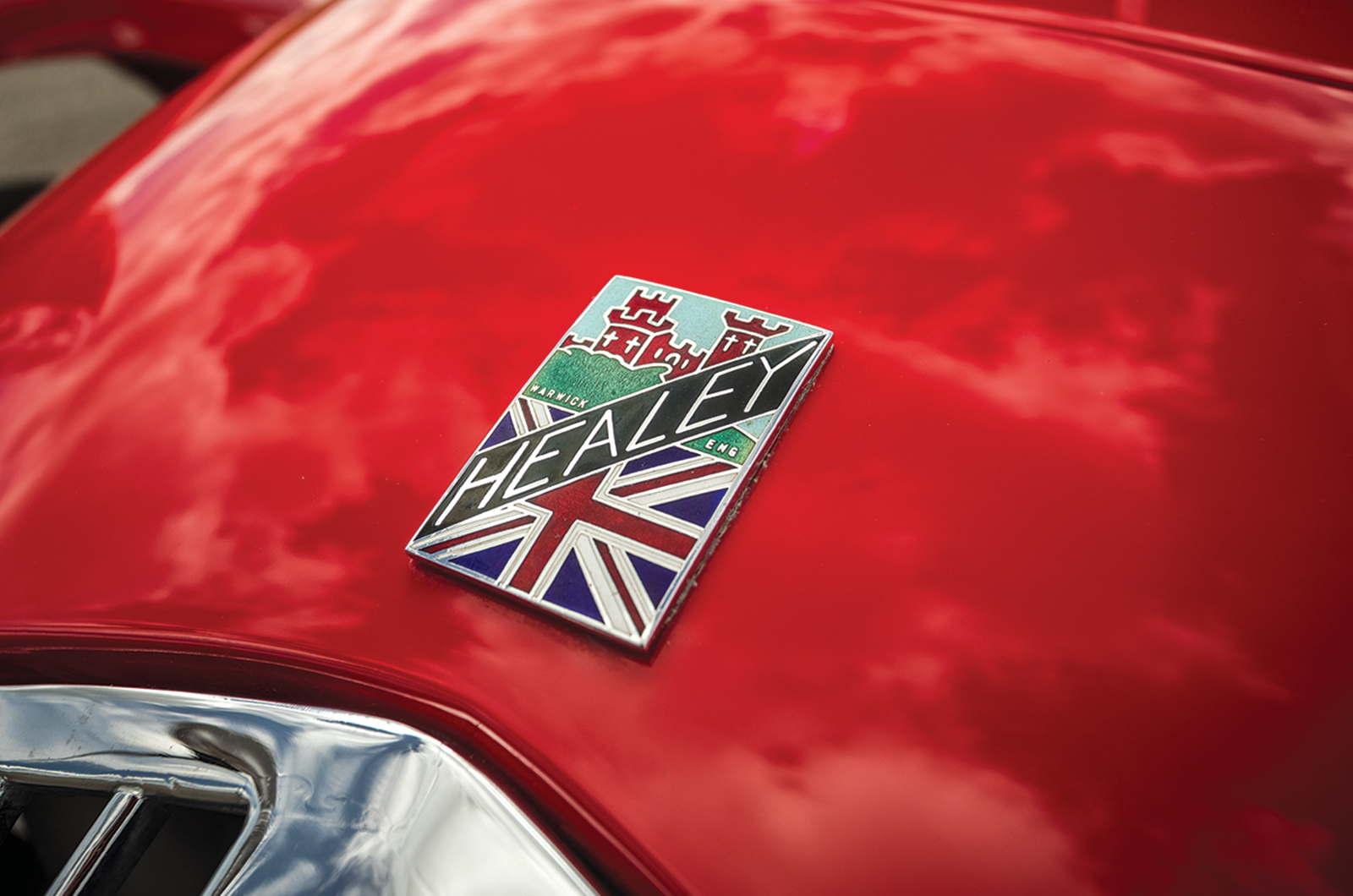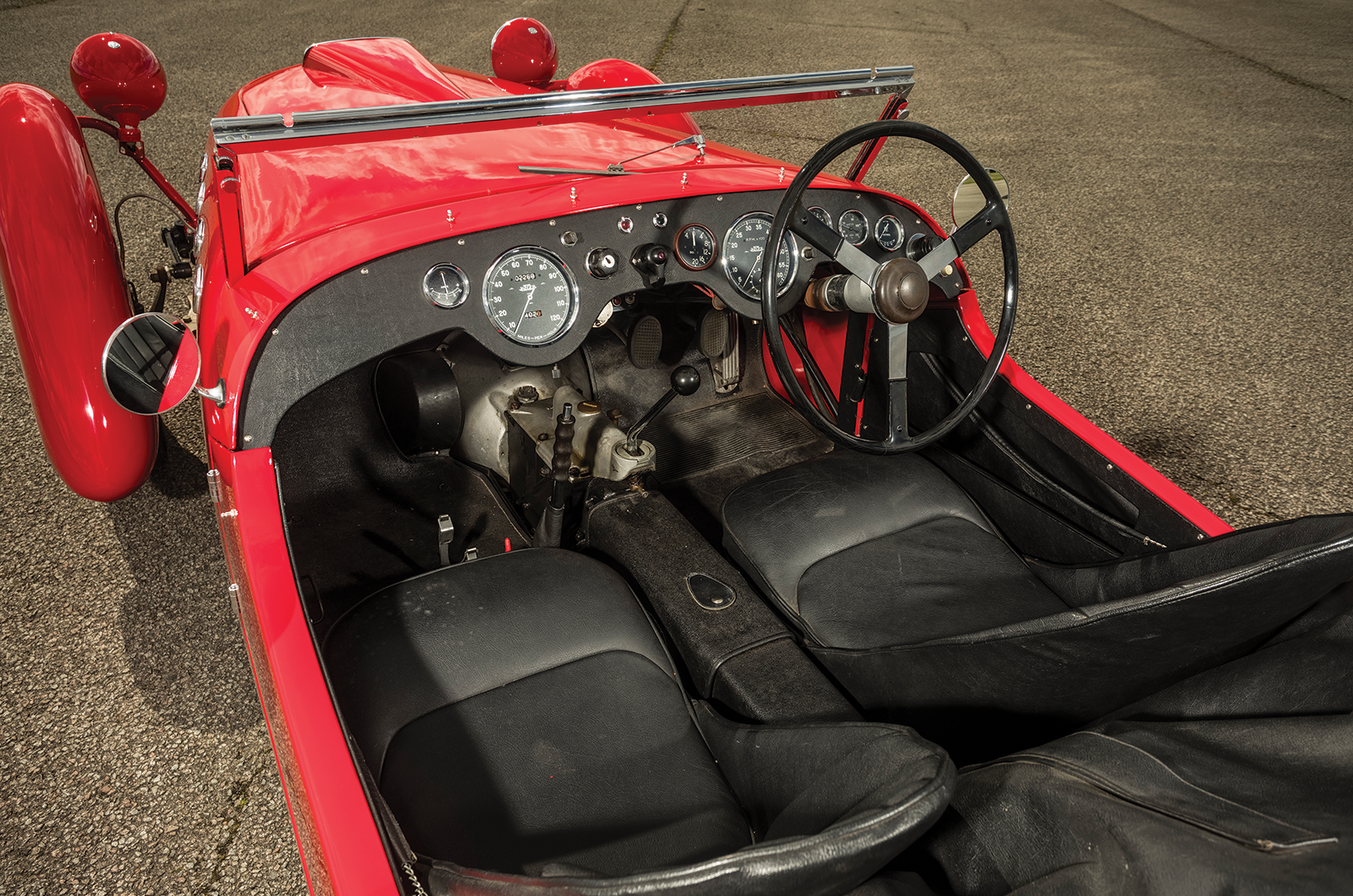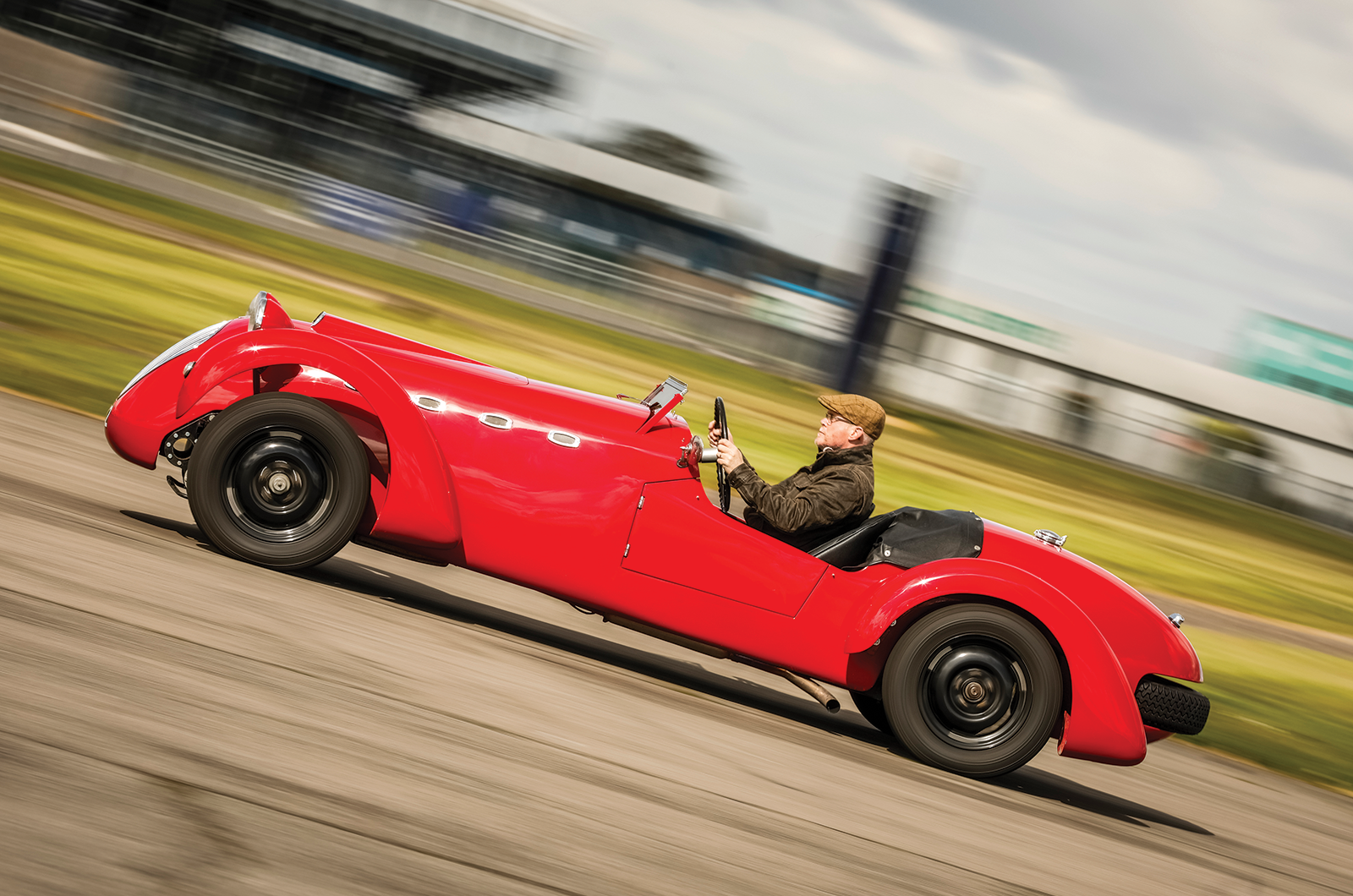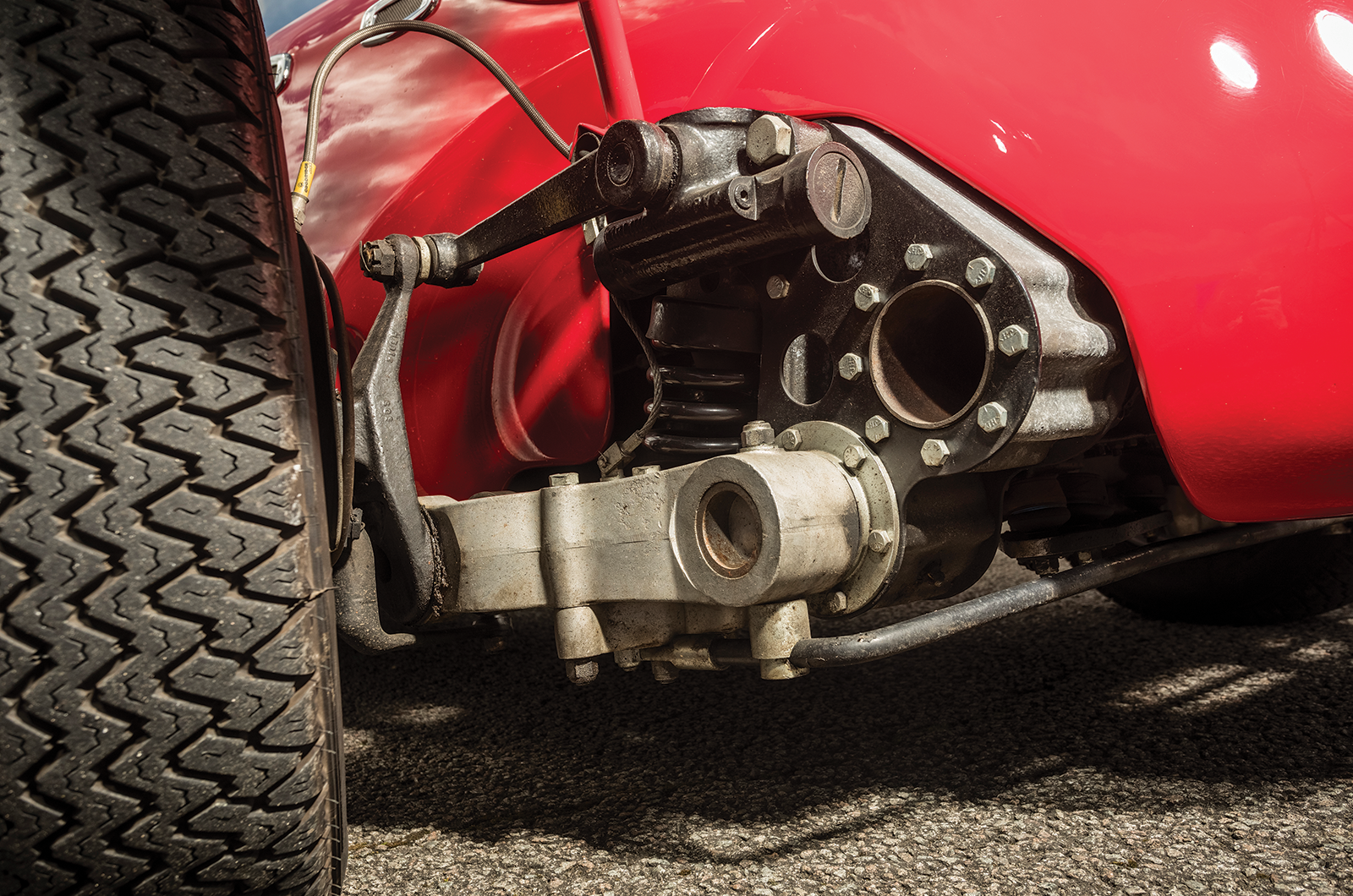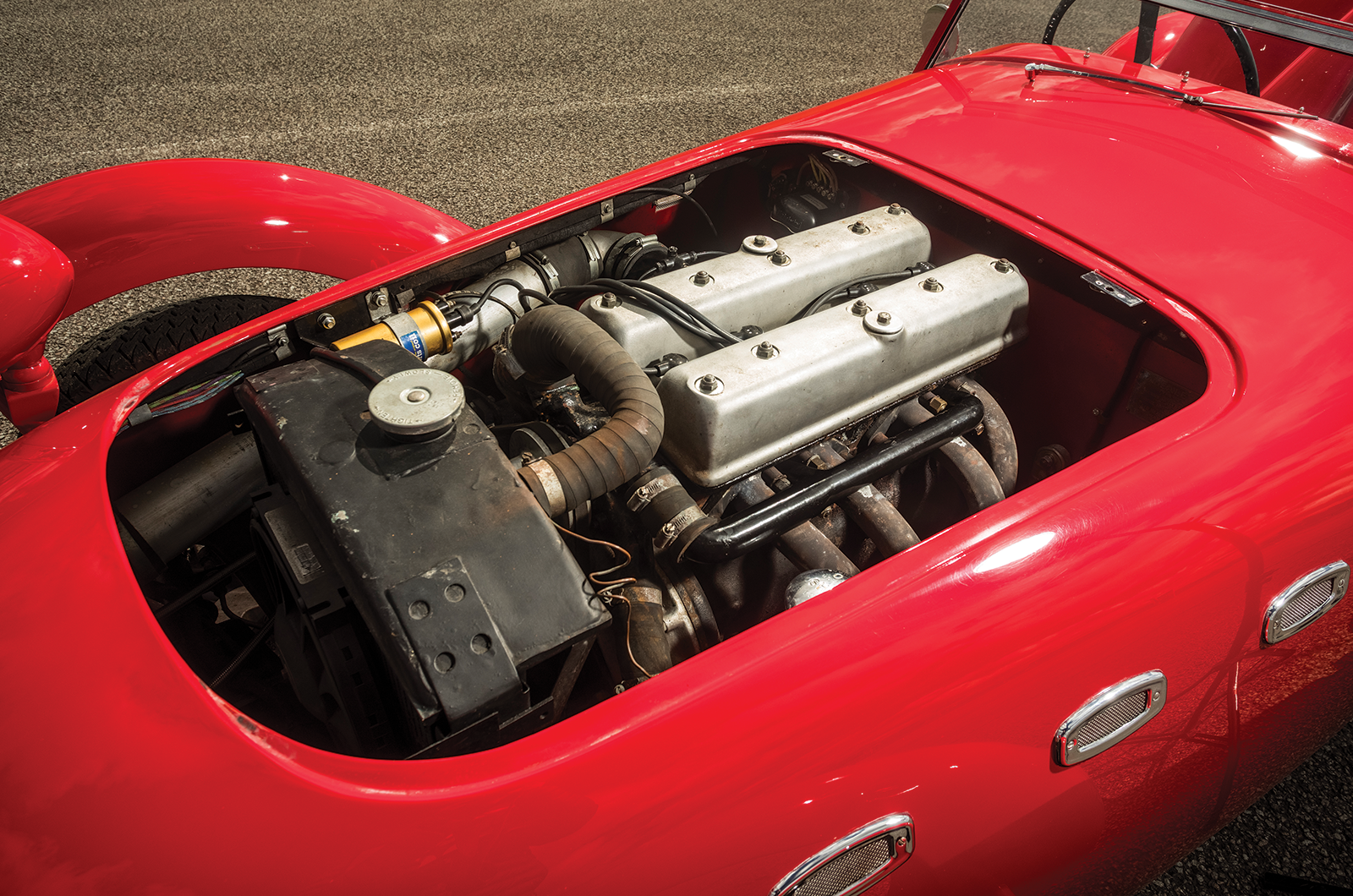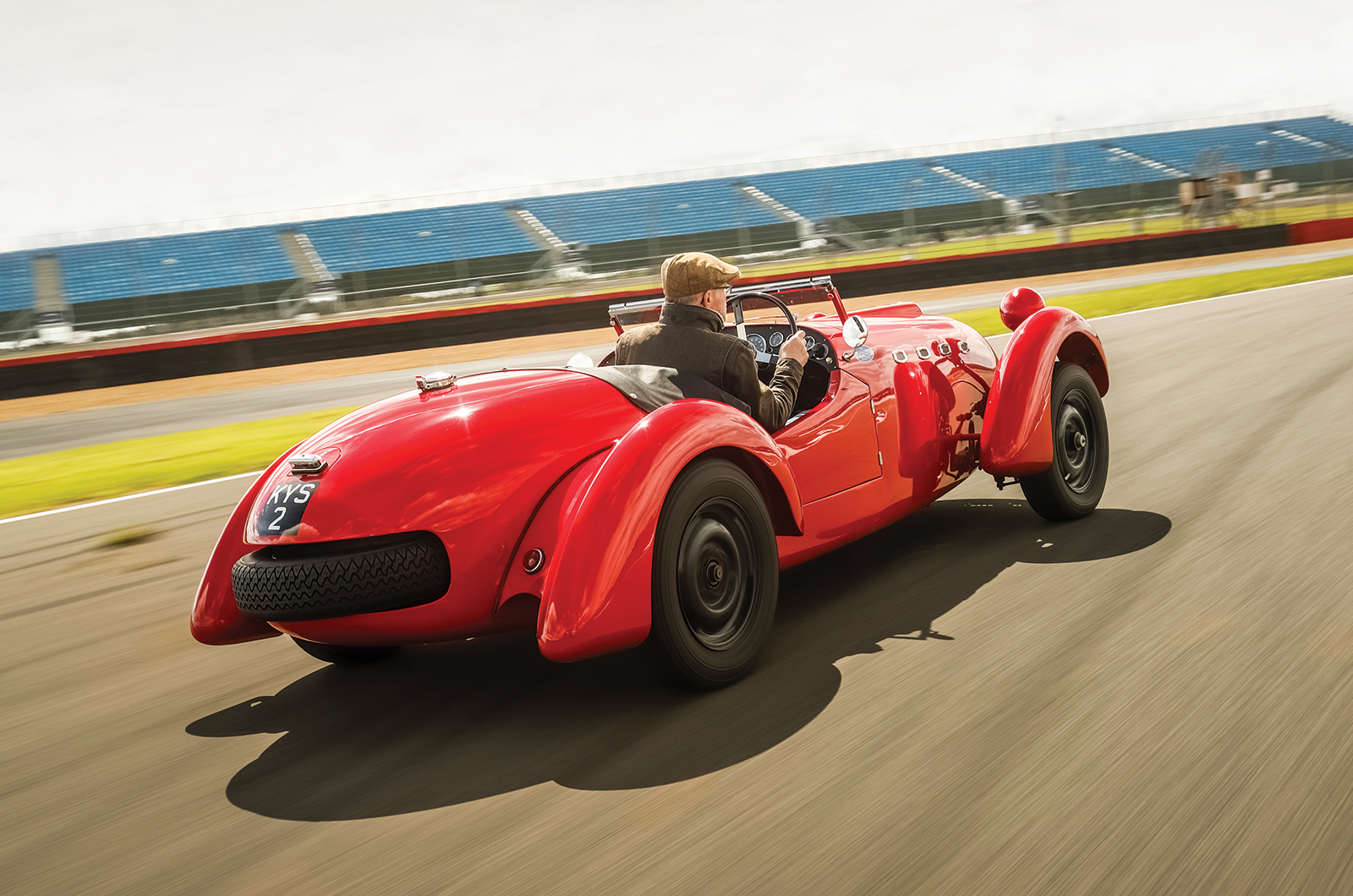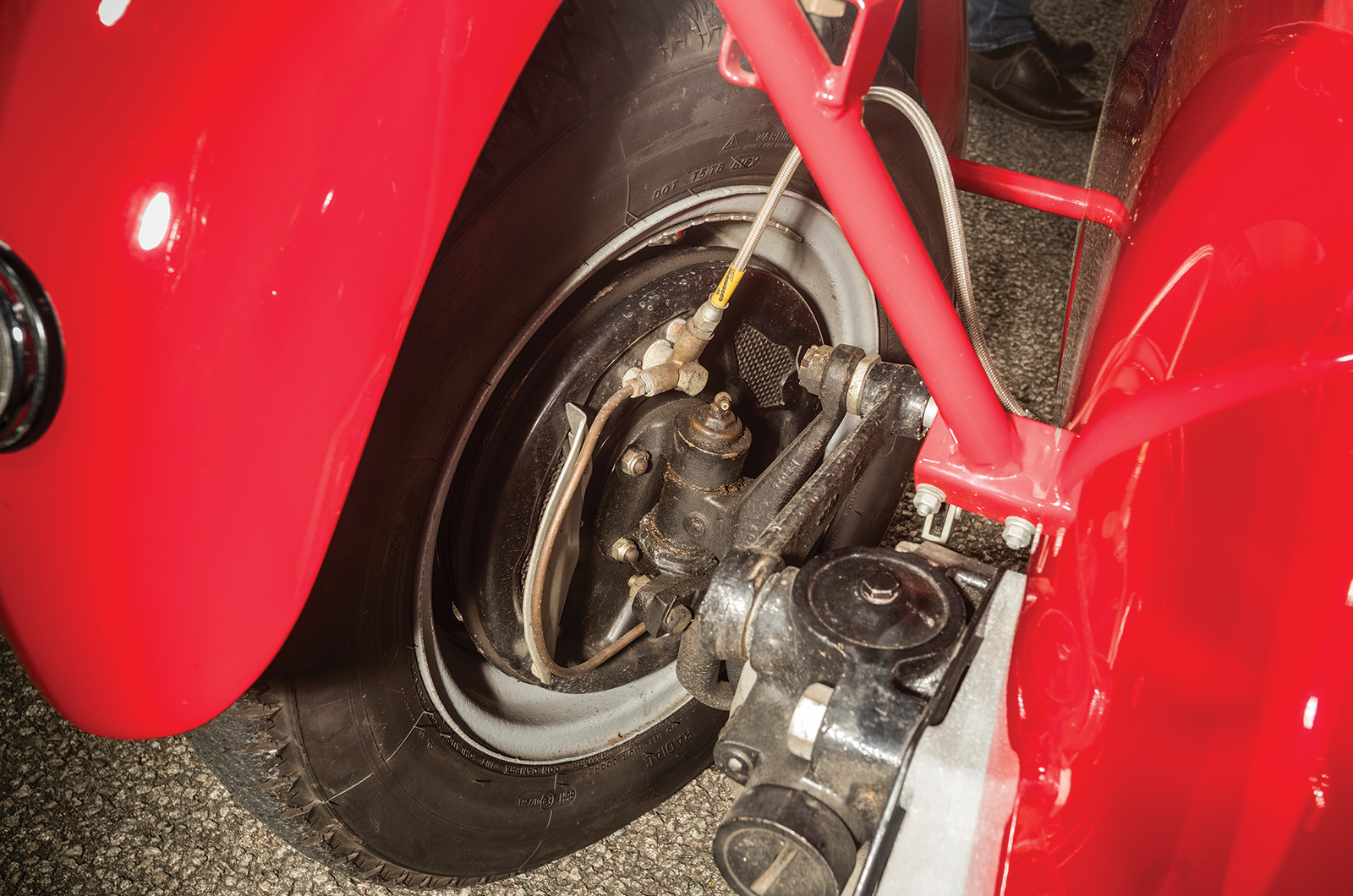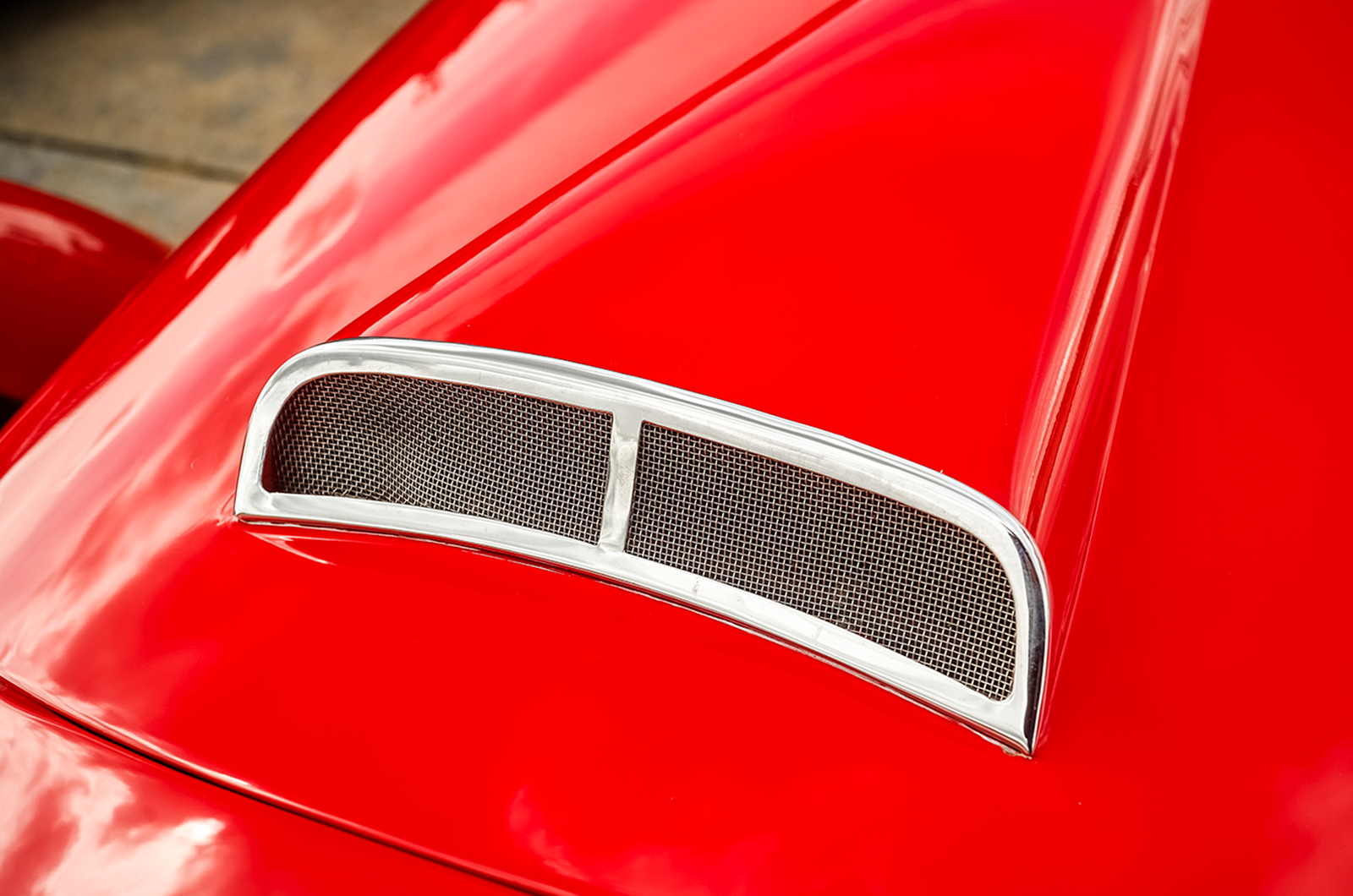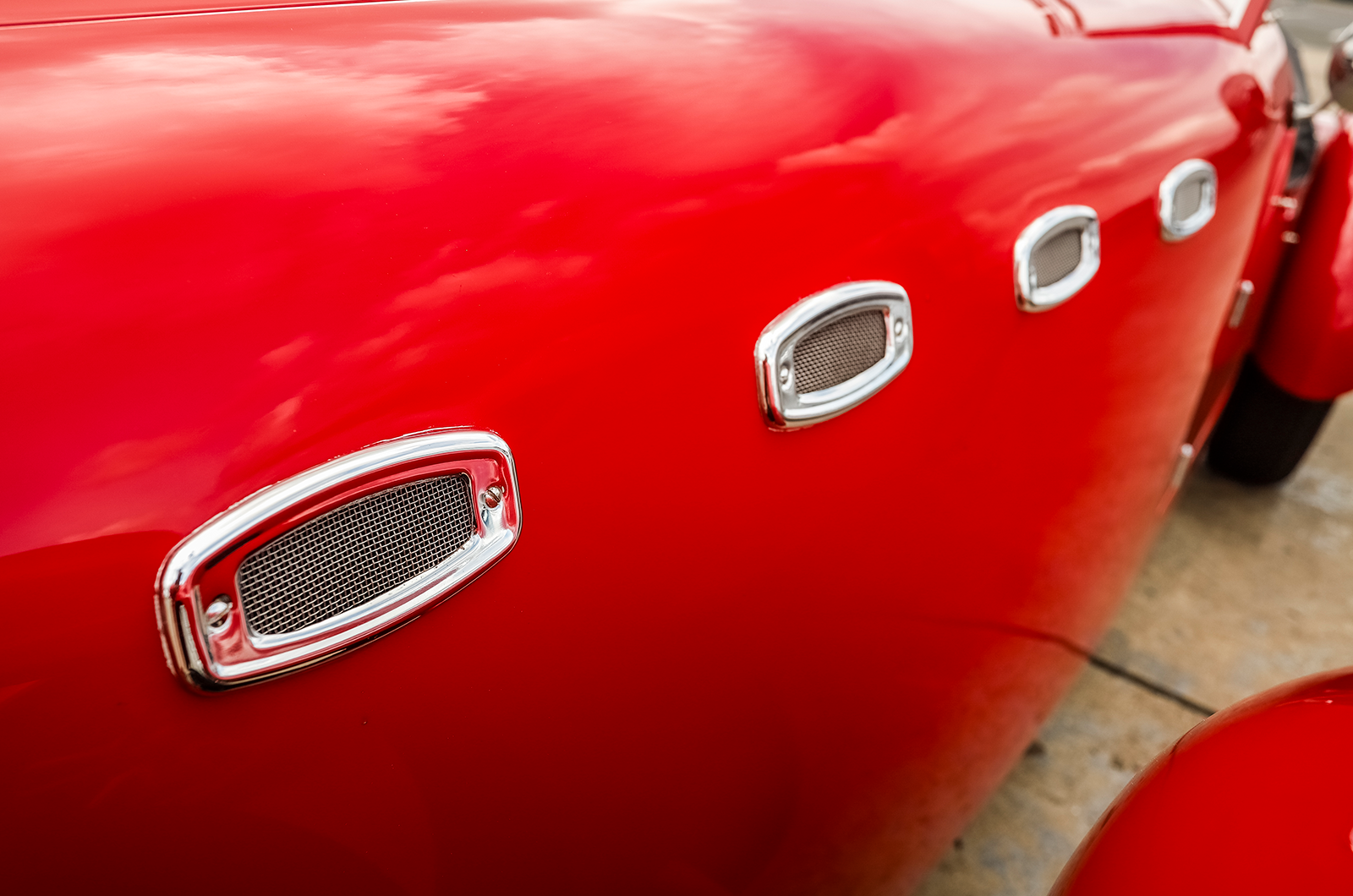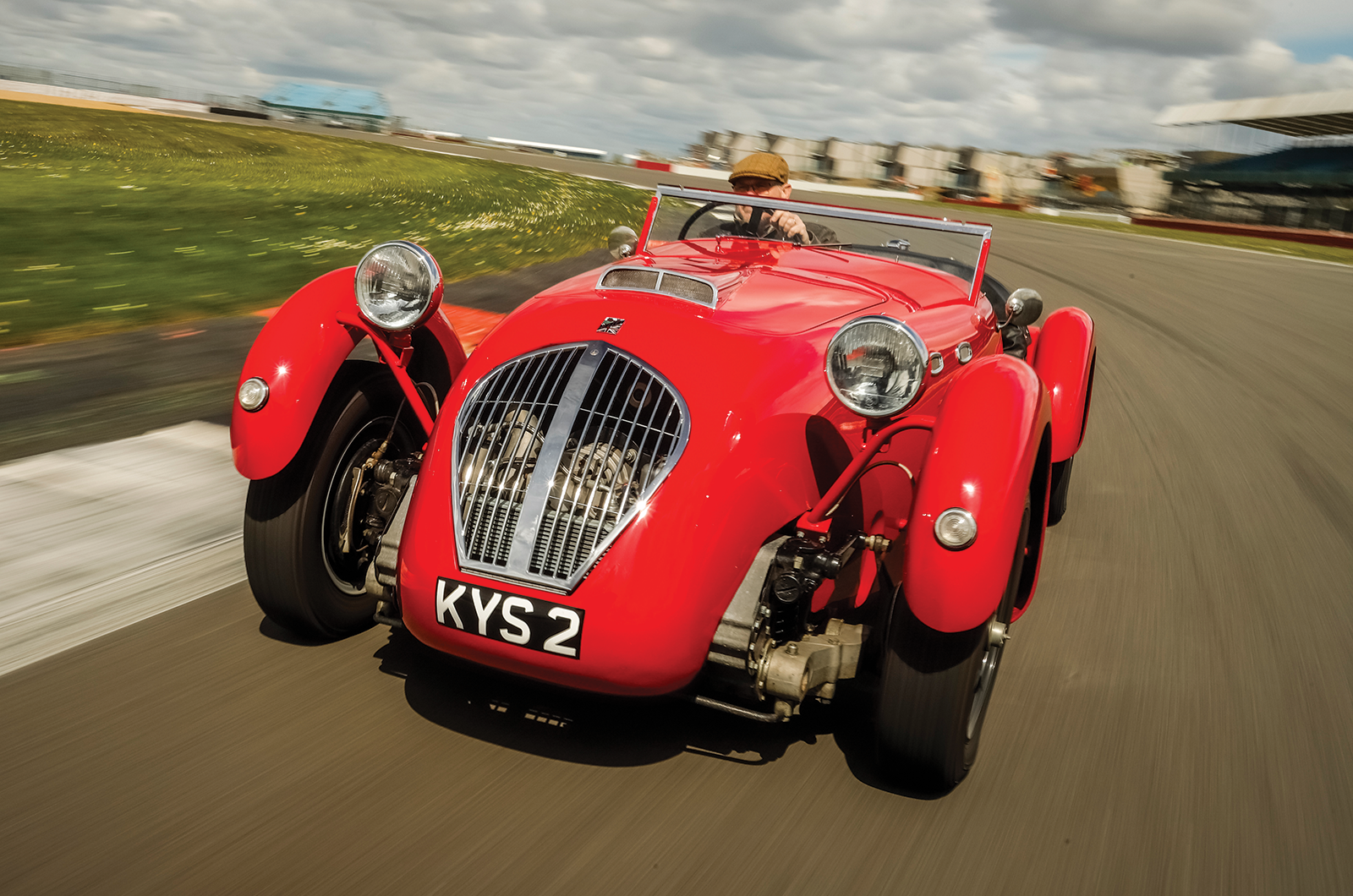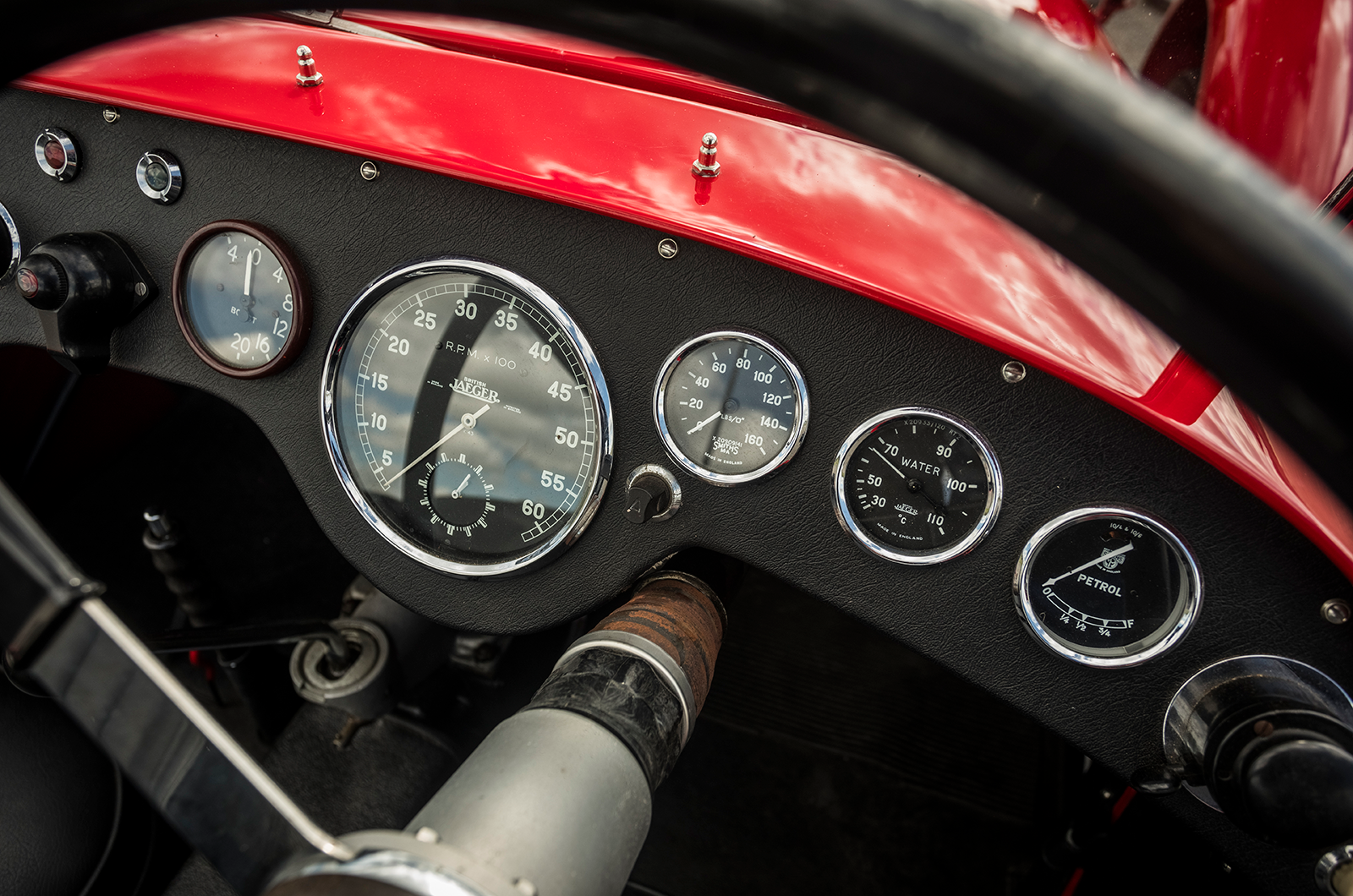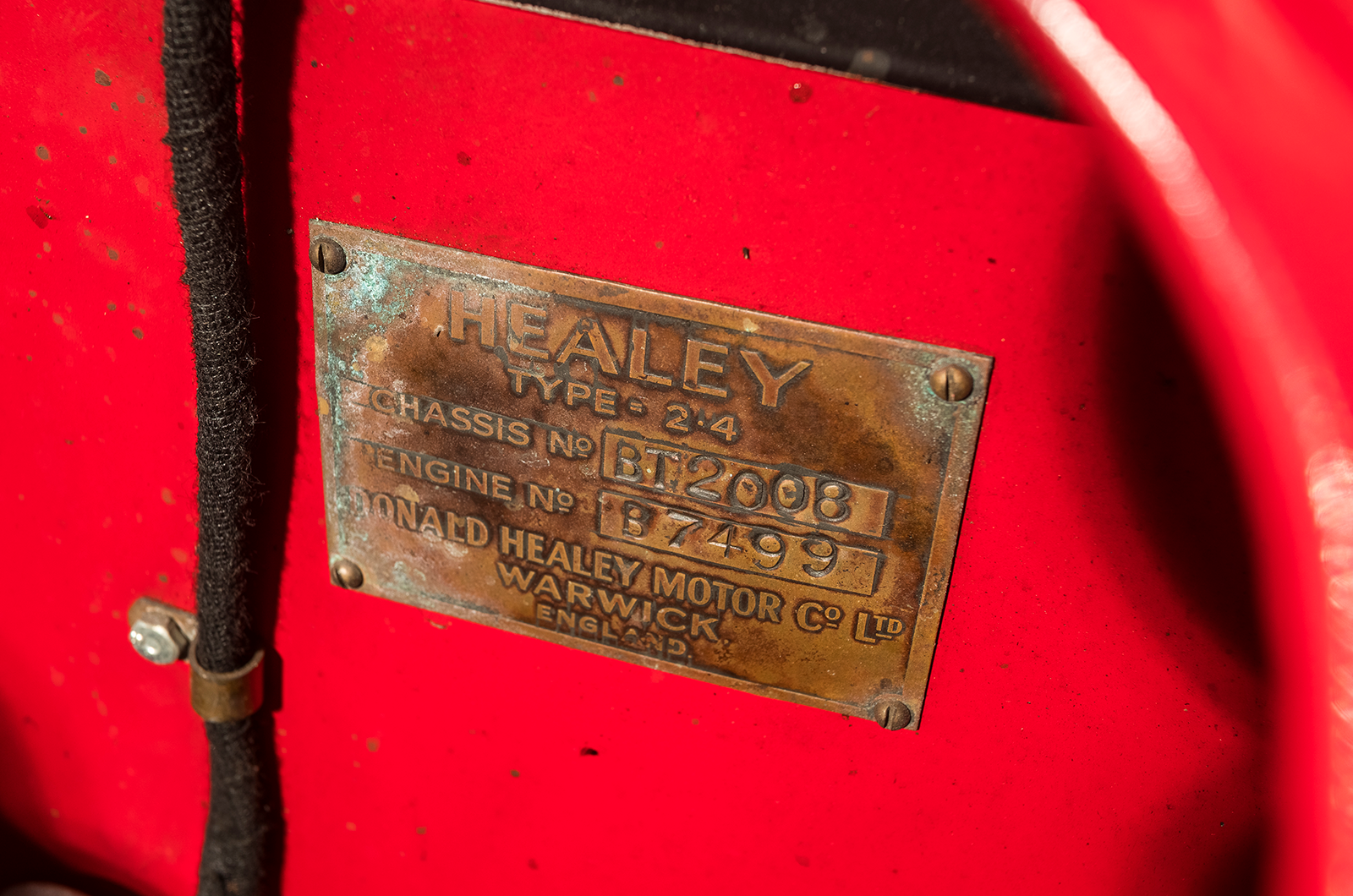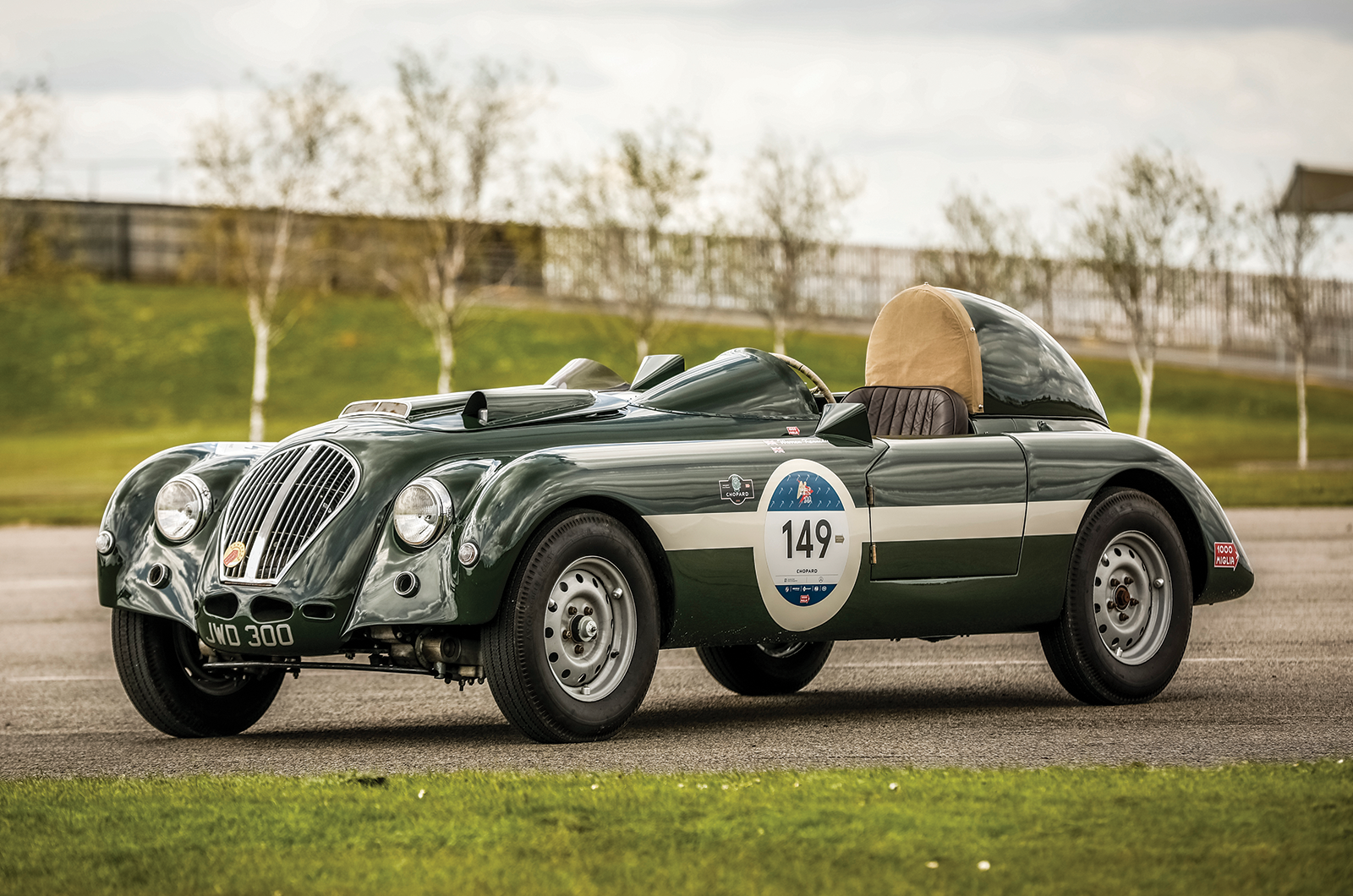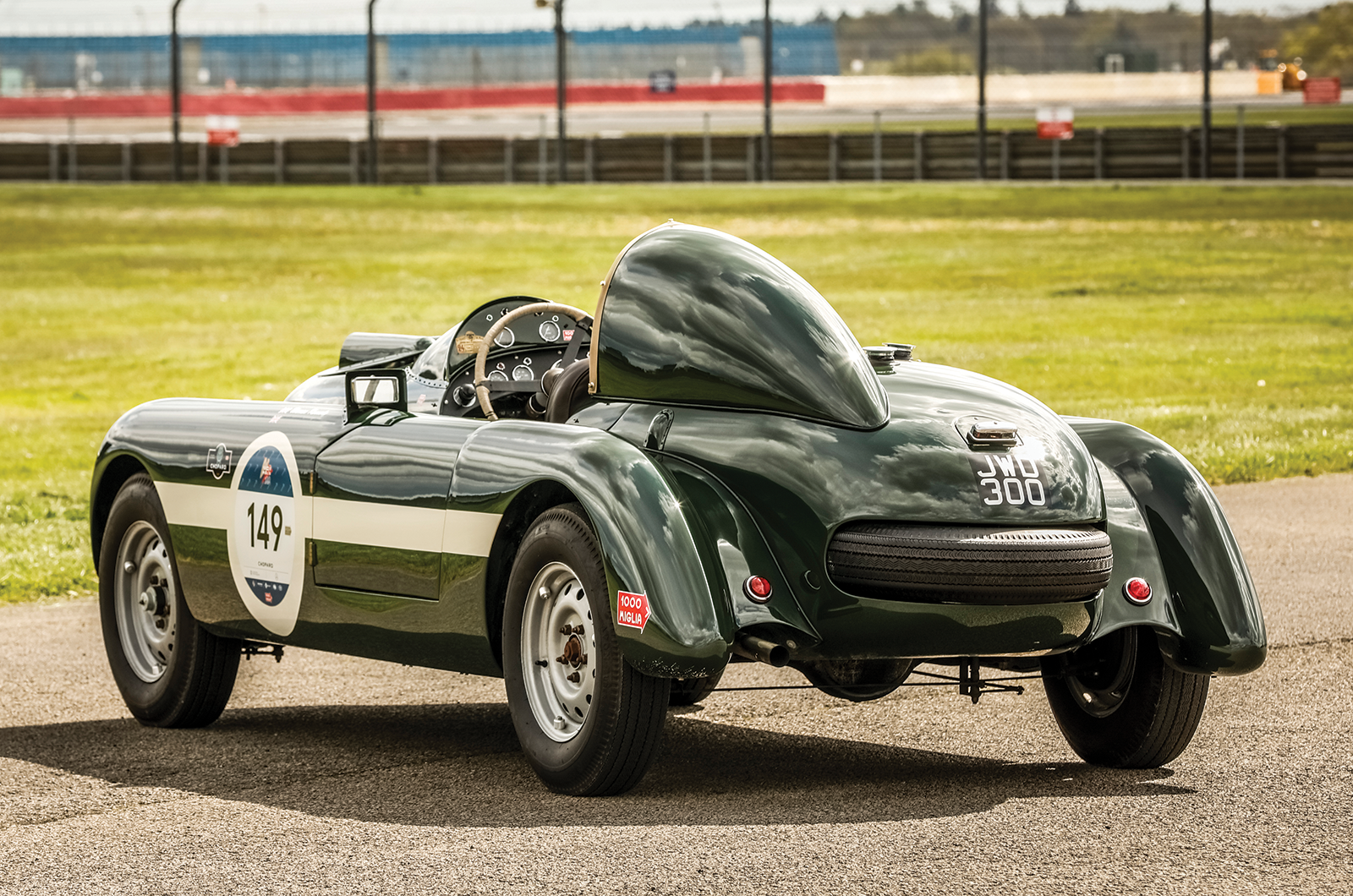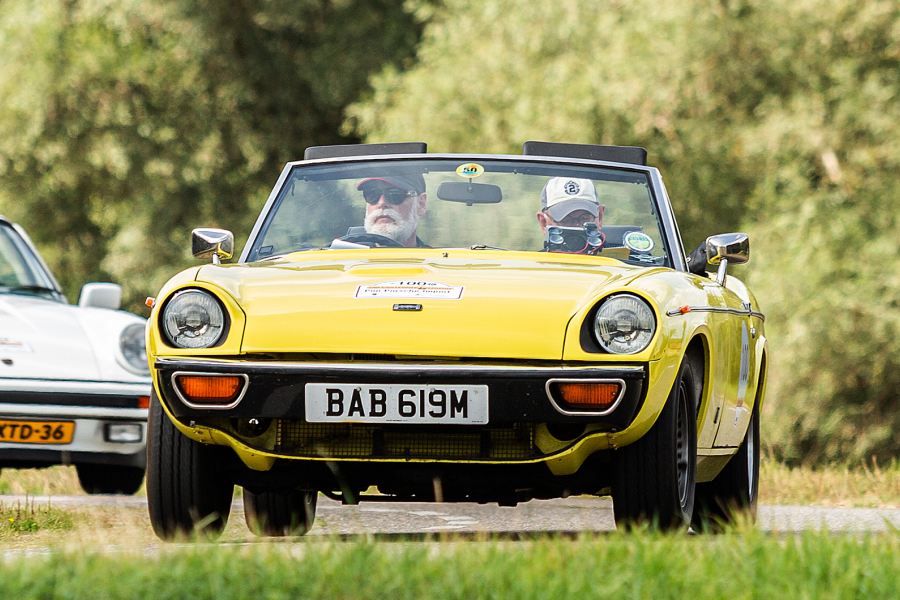With the Wade neatly installed in front of the engine, behind the grille, this E-type’s headlights are relocated to the arms securing the cycle wings to the chassis – they interrupt airflow, but that is easily compensated for by the hike in power from 104bhp to an estimated 140bhp.
With the 21st-century track so much more imposing than it was 75 years ago, that extra performance should avoid both car and driver feeling overwhelmed today.
Sitting in the Minimalist cabin, facing down the old National Circuit pitlane, I fit perfectly behind the large, sprung, three-spoke steering wheel – although in its lowest position, the upper edge of the adjustable windscreen is right in my sight line.
Seven instruments, including a large 6000rpm tachometer straight in front and a 120mph speedo aligned with the passenger, are spread across the flat dashboard.
The fuel-filler cap sits on the Healey Silverstone’s beetle-back rear
The floor-mounted pedals are well spaced for heel-and-toe changes, as you would want in a weekend racer, and the canted-back gearlever for the four-speed Riley ’box is nicely placed.
It’s an untemperamental car to drive from the off, although the steering is heavy at low speeds and only moderately lightens as you gather pace (the Marles steering box was originally intended for a dumper truck).
The bark from the exhaust, which exits just under where the passenger sits, is loud and jolly – the soundtrack of Old England – but in this case overlaid with just a hint of blower whine.
On the track, the supercharged swell of torque from low revs dominates the car’s performance, making it easy to go into a given corner a gear higher than you’d expect, without any loss of exit speed.
The Healey Silverstone swallows its spare wheel, which doubles as a rubber rear bumper
Weighing a mere 2070lb, the Silverstone feels quick and biddable, and you find yourself using the full width of the track to minimise yaw from the rear – which is hilariously easy to provoke, but easily caught.
On the road, setting aside the weighty steering (which Warren assures me can be improved by some geometry tweaks), the Silverstone is a hoot for an early-’50s sports car.
The on-demand torque from the crank-driven Wade blower becomes an even greater advantage, and you soon find that moderns are holding you up and forcing a series of downchanges through the Riley ’box, shifts in which can’t be hurried.
Utterly composed over awkward surfaces, the Silverstone even manages to ride well, but if there is a hole in its road-based armoury it’s the slow turn-in, which was less evident on track; you really need to plan your approach to each bend with care.
‘The Healey Silverstone tapped into the growing enthusiasm for club racing, while offering a package that wasn’t too compromised for commuting’
Even so, there’s minimal body movement along our twisty, cambered route, with plenty of grip – at least from the front – and straight-line stability.
The only thing detracting from the experience is a brake pedal that requires plenty of effort (which you’d expect), but which feels slightly mushy on initial application.
Plenty of first-class engineers excelled in Britain’s auto industry in the post-war years, and Donald Healey was among the best of them.
But with the Silverstone, Healey also proved adept at recognising emerging market trends, applying his technical prowess to create a car that captured the enthusiasm of racers, from the impecunious to the well-seasoned.
It’s just a shame that more weren’t built.
Images: Tony Baker
Thanks to: Warren Kennedy; Jonathan Gill; Silverstone Circuit
Healey in the USA: six-cylinder prototype
JWD 300 was a prototype used to test the straight-six Nash engine
In 1949, Donald Healey was already in talks with General Motors to supply Cadillac V8 engines for his cars when a chance meeting with George Mason from US manufacturer Nash-Kelvinator resulted in a change of plan.
Mason agreed to furnish Healey with Nash’s 3.8-litre straight-six, which would power a new Nash-Healey model to be designed and built at Healey’s works for the US market only.
Produced between 1951 and ’54 (although by Pinin Farina from 1952, with a new design by Battista Farina), it predated the Chevy Corvette as America’s first true sports car from a domestic brand.
A total of 506 were built before production ended.
This Healey Silverstone-based prototype came within a whisker of a Le Mans podium in 1950
JWD 300 is the 1950 prototype used by Healey as a rolling testbed for the incoming Nash powertrain.
With its triple-carburettor engine modified to produce 260bhp, delivering drive through a Nash three-speed overdrive gearbox and installed in a modified Silverstone chassis, the car had a short but significant competition life.
In 1950, Donald Healey entered the Mille Miglia, with son Geoff as co-driver, finishing 177th overall after a number of setbacks.
Undeterred, JWD was returned to Healey’s works and modified to enter Le Mans the same year.
This straight-six-engined Healey Silverstone has been restored
This time driven by Tony Rolt and Duncan Hamilton, the prototype narrowly missed a podium finish, crossing the line fourth overall.
JWD 300 never raced again in period, but this historic Silverstone hybrid has now been fully restored.
A brief drive reveals a potent and precise-handling sports car, which has been rolling-road tested to 146mph – its engine still only revolving at a leisurely 3000rpm.
Factfile
Healey Silverstone
- Sold/number built 1949-’50/108 (including three period conversions)
- Construction steel chassis, aluminium body
- Engine all-iron, twin ‘high-cam’ 2443cc ‘four’, twin SU H4 carbs, optional supercharger
- Max power 104bhp @ 4500rpm (standard)
- Max torque 132lb ft @ 3000rpm
- Transmission four-speed manual, no synchromesh on first, RWD
- Suspension: front independent, by trailing links, lever-arm dampers, anti-roll bar rear torque tube, radius arms, Panhard rod, telescopic dampers; coil springs f/r
- Steering Marles box
- Brakes drums
- Length 14ft (4260mm)
- Width 5ft 3in (1600mm)
- Height 4ft 6in (1371mm)
- Wheelbase 8ft 6in (2590mm)
- Weight 2070lb (940kg)
- Mpg 21.8
- 0-60mph 11 secs
- Top speed 110mph
- Price new £975 plus Purchase Tax
- Price now £150-220,000*
*Prices correct at date of original publication
Enjoy more of the world’s best classic car content every month when you subscribe to C&SC – get our latest deals here
READ MORE
Driving Donald Healey’s Monte-winning Invicta Low Chassis
Nash-Healey: Italian style, American muscle and British brains
Austin-Healey 100S coupé: the boss’ choice
Simon Hucknall
Simon Hucknall is a senior contributor to Classic & Sports Car

